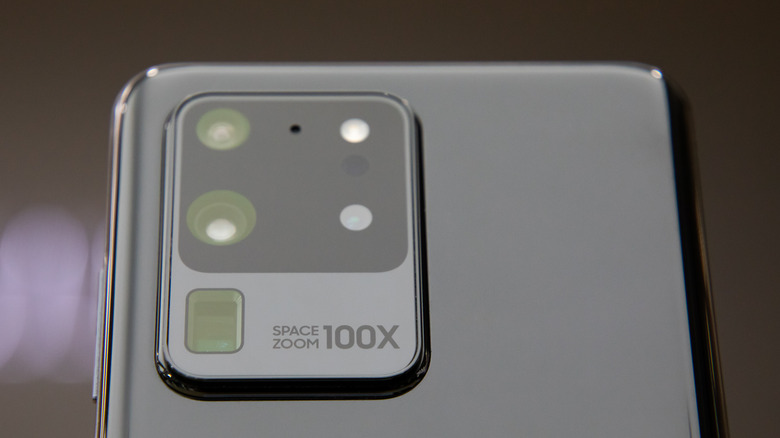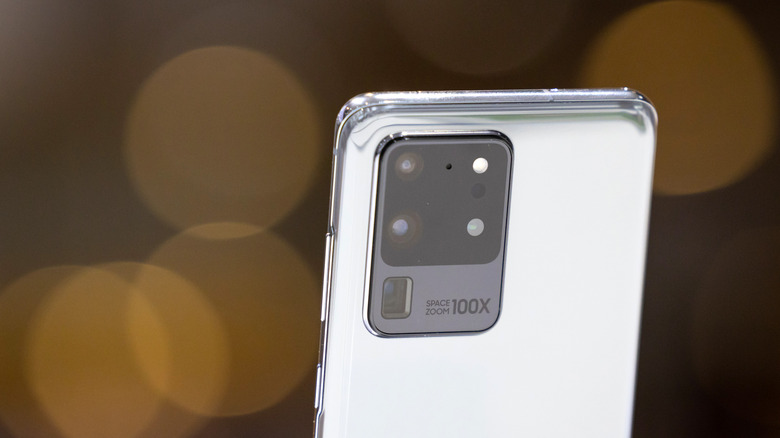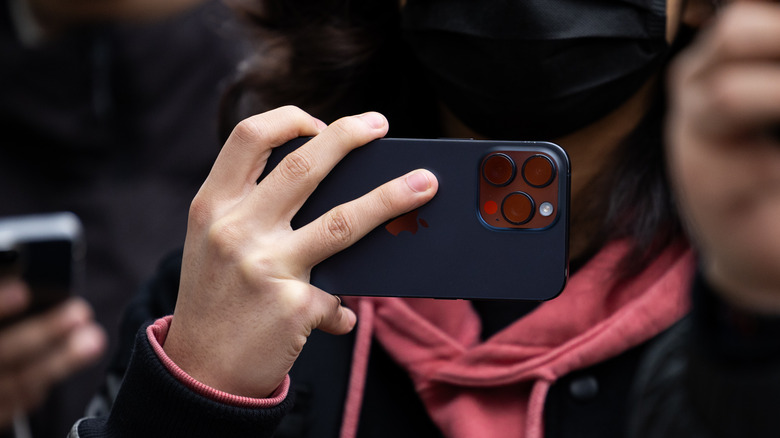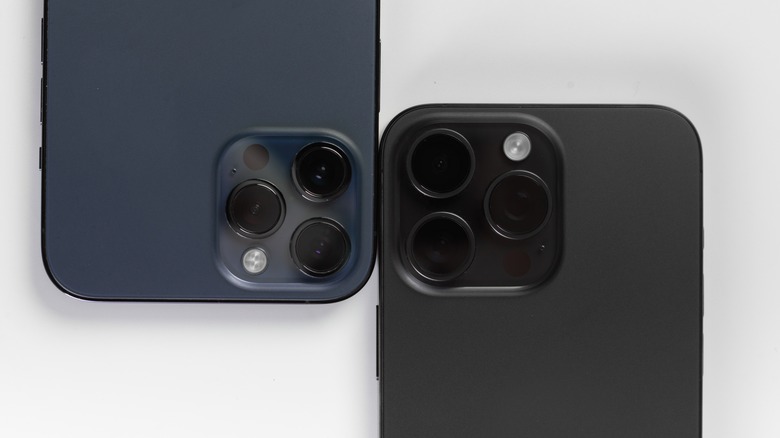Periscope Lens Explained (And How It Differs From Other Lenses)
Cellphones with cameras began to arise in the year 2000, with the launch of Samsung's SCH-V200, capable of taking a limited number of shots at a formidable 0.35 megapixels. For those serious about photography at the time, needless to say, that was far from sufficient.
Today's smartphones have had a way of replacing multiple devices we'd often carry around with us — cameras being one of the most prominent innovations. Almost a quarter of a century later, those mobile cameras have taken leaps and bounds: Motorola boasts that its Edge 30 Ultra is the first smartphone ever with a 200 megapixel camera.
There's more to the quality of a photograph than megapixel count, however. Some manufacturers have begun to implement periscope lenses into their devices to improve photo results, as the slender form factor of smartphones can make it difficult to implement ever-more-sophisticated cameras.
This piece will break down how the periscope lens' technology works, what it means for a smartphone in practical terms, and how it may affect performance compared to more conventional lenses. Our smartphone cameras have a range of features we may be unaware of, and this periscope technology is another example.
The advantages of a periscope camera
Periscope lenses, rather like periscopes themselves, need to be as long as they practically can in order to both collect the light and carry it to where it needs to be. How is this feasible within the slim body of a smartphone? It's relatively simple: The light passes through the smartphone's camera sensor (from front to back) at the optimal angles. The glass prisms reflect and direct light from the subject to the camera's light-sensitive mechanics in a similar manner.
With a periscope camera, the lens is within the body of the device itself, rather than extending outwards from it. This helps to prevent damage to it and maintains the slim and symmetrical body of the device, but it also means that the user can enjoy the advantages of optical zoom without additional bulk.
The most important distinction between digital and optical zoom is that the former effectively only crops a section of the image and makes it appear larger. Optical zoom in smartphones allows glass sections within the camera to adjust the effects of the light on the subject and camera sensors, similar to how a professional camera's zoom lens literally extending closer to the subject.
A periscope camera inside the smartphone is an unobtrusive way to offer this effect (otherwise highly impractical for such devices), potentially offering x5 optical zoom or even higher. It isn't perfect either, as component quality can affect the end results, but it's very advanced technology.
Other types of lenses, other types of optical zoom
With periscope lenses being a rather newer concept — early examples, such as Samsung's Galaxy S20 Ultra, launched in 2019 — it's important to note that optical zoom in smartphones isn't their exclusive domain. Devices that don't have periscope lenses, but offer optical zoom can do so by switching between multiple cameras to get the best shot for the zoom level the user has selected.
In the case of the iPhone 14 Pro, for instance, three lenses are built in: the standard lens, telephoto lens, and ultra-wide lens. Sensors can switch between them to get the best shot, and in doing so, an optical zoom — a closer view of the subject acquired solely through the mechanics of the lenses, rather than any digital means — is performed. While this is a great way to achieve a higher-quality "zoom" using the technology available, it isn't the same mechanical process as with a periscope lens.
Wide-angle lenses, as the name implies, are intended to capture a wider view, while zooming is more about bringing a specific element of that view into the forefront. When it comes to the latter, periscope lenses essentially imitate the action of the components of a high-end zoom lens within the confines of the device.
The present and future of periscope lenses
Periscope lenses may be impressive technically, but they aren't necessarily a huge step forward in image quality. They have the potential to be, perhaps, but the more complex architecture can be difficult to fit within a smartphone's body, and will necessitate smaller sensors and so less light to work with and shutter speeds reduced. This, potentially, can have a negative effect on the final photograph.
As with every other critical component of a smartphone, however, the periscope camera is an evolving technology. When Apple announced the implementation of such a camera in the iPhone 15 Pro Max, it deemed the design "tetraprism." The term refers to the pattern of prisms that is the periscope system, which can, according to Apple, "reflect light rays four times over. This allows light to travel for longer in the same space, giving you a new focal length." Where the iPhone 14 Pro Max offers a 3x optical zoom telephoto lens of a more conventional sort, The 15 Pro Max tetraprism lens affords it 5x optical zoom.
The Samsung Galaxy S23 Ultra, meanwhile, can achieve a 10x optical zoom with its 230mm periscope lens. Though higher levels of zoom do not necessarily make a better photograph, and periscope lenses are limited by their smaller light sensors, it's a fantastic solution to maintaining the form factor of smartphones while emphasizing the abilities of their cameras. It will be intriguing to see how the technology evolves further.



